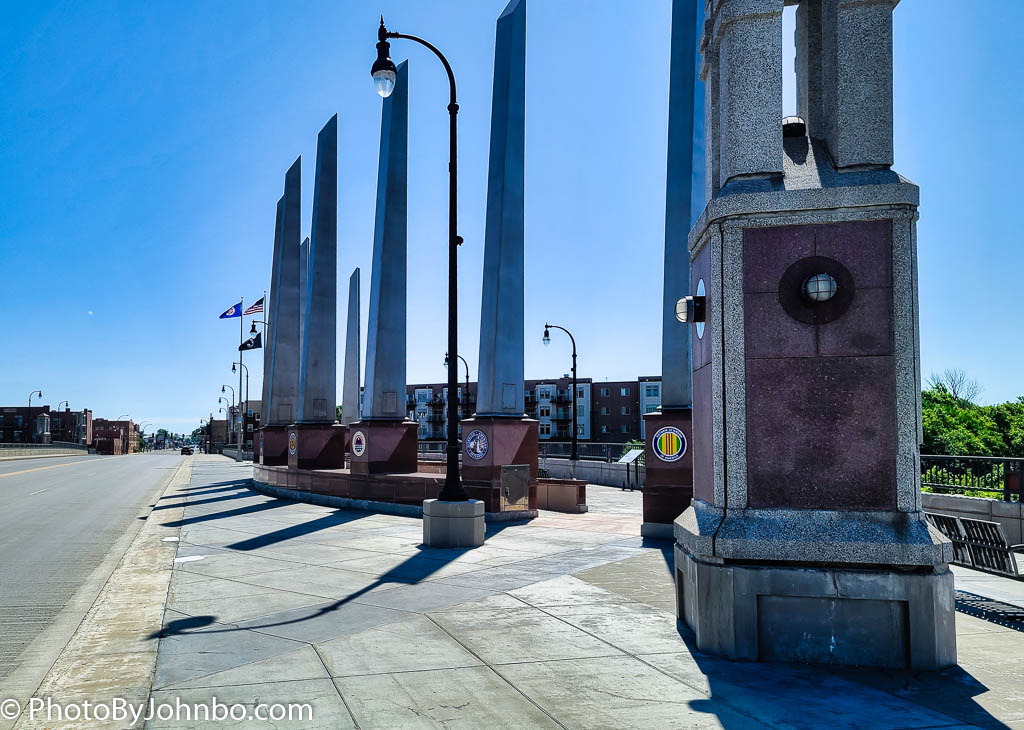
Fargo, North Dakota.
The Red River of the North is the boundary between North Dakota and Minnesota. Over the years, several bridges have been built that spans the river at Fargo to connect with Moorhead, Minnesota on the east side of the river. Though it is still referred to as the Main Avenue Bridge like the ones it replaced, this bridge has special meaning to local veterans. But first, here are the construction details:
The steel stringer bridge was built in 2003 replacing a bridge of similar design that was built in 1937. That bridge replaced the original through-truss swing span constructed in 1890. The current bridge has a length of 807 feet (246 m). A wide sidewalk on the south side of the bridge accommodates pedestrian traffic and a “bump-out” supports the pillars, each dedicated to a branch of service or to a veterans service organization.
Looking in my archives, I discovered an aerial view of three of the bridges that cross the Red River in downtown Fargo and Moorhead. The bridge on the left is the Veterans Memorial Bridge. The center bridge is the downtown BNSF railroad bridge, and the bridge on the north crosses the river at Fargo’s NP Avenue. Noticeable on the Veterans Bridge is the bump-out for the pillars. There is no sidewalk on the north side to accommodate four lanes of traffic, two in each direction. The image was captured in March 2010 while the Red River was at a high flood stage.
On a sunny and warm July day, we walked across the bridge from the Minnesota side. Though we have driven across many times since its construction, this day was our first day to walk across with a goal of looking at the memorial pillars and the other treats that await a visitor.
Historical placards and discs inlaid in the sidewalk tell the history of the Red River and of its importance to the communities that share the river’s banks. In Fargo’s early settlement days, the river was an important transportation route from early American settlements into Canada. The river’s origin is at the confluence of the Bois de Sioux and the Ottertail Rivers near what is now the border between North and South Dakota.
One of the few rivers in the United States to flow north, the Red River flows into Canada near the cities of Pembina, North Dakota, and Emerson, Manitoba, then ambles through Winnipeg, Manitoba where it joins the Assiniboine River at a point known as The Forks, a popular tourist area near downtown Winnipeg. Continuing northward, the Red River ends its journey at Lake Winnipeg, Canada’s sixth-largest freshwater lake.
One of the discs inlaid in the sidewalk features a map of the river as it crosses the border into Canada. Fur traders and others also traveled near the river in the 19th century, their goods carried by oxcart between Winnipeg and points south. This contributed to the growth of commerce in the Red River Valley.
Other discs along the walk provide more information about the river. Though this image is hard to read, its message is, “The Red River drops an average of five inches per mile from its source to Lake Winnipeg.”
The history of the river is but a side point to the real purpose of the memorial on the bridge. The ten columns feature emblems representing the four branches of the military and six major veterans organizations. On a warm day in 2003, the bridge was dedicated to the veterans of our country in a celebration of honor held on Flag Day, June 14. The ceremonies even featured a fly-over by two World War II P-51 fighter planes.
The then Fargo Mayor Dennis Walaker in his remarks noted, “This is their bridge. This is our bridge. We need to be reminded every day: The reason we have the freedom today is because of them.”
There is even a replica Statue of Liberty at the site. I did not get a photo of the statue as it was stolen in 2019. A replacement statue was completed and reinstalled shortly after our visit to the bridge in the summer of 2020. I conclude this post with my usual comment that if your browser supports the function, you may click on an image to get a better view.
John Steiner

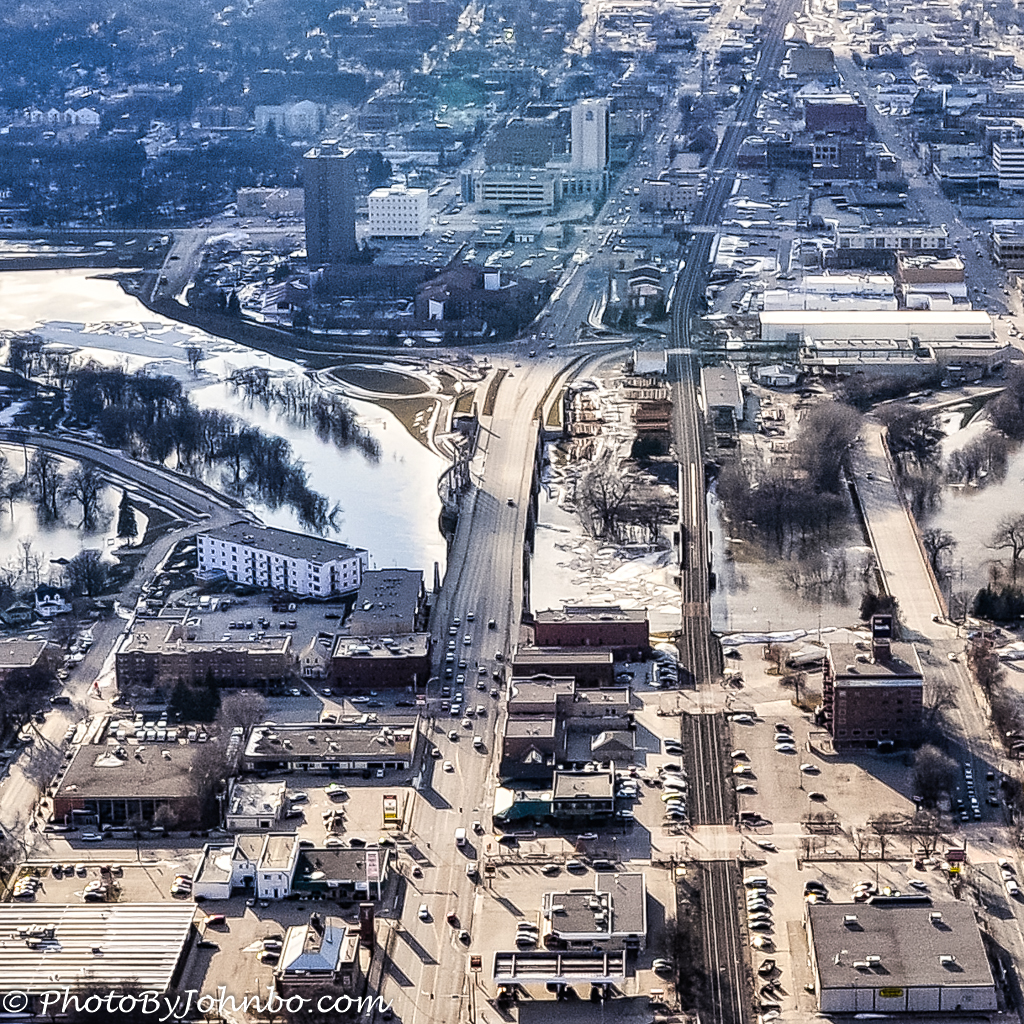
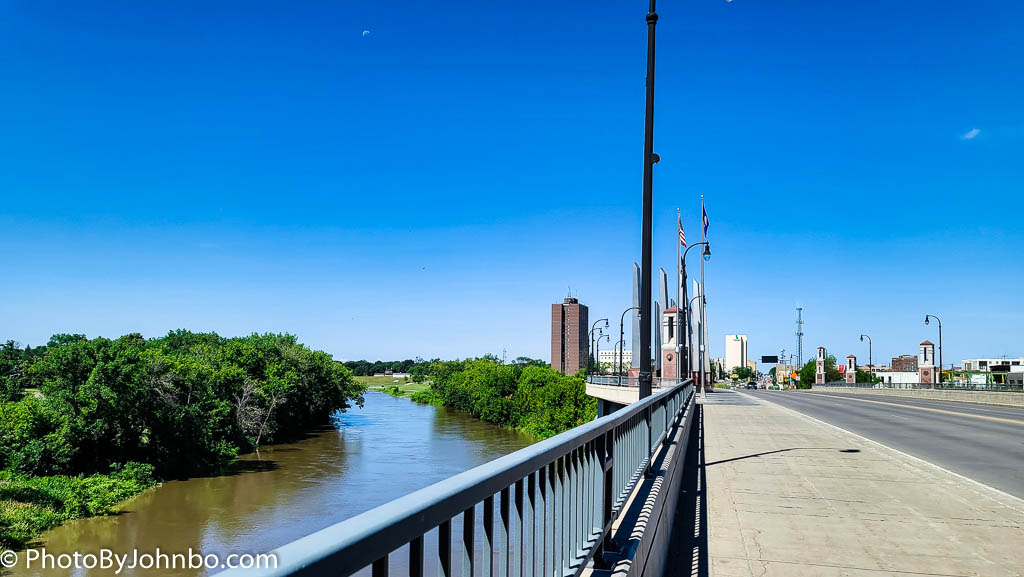

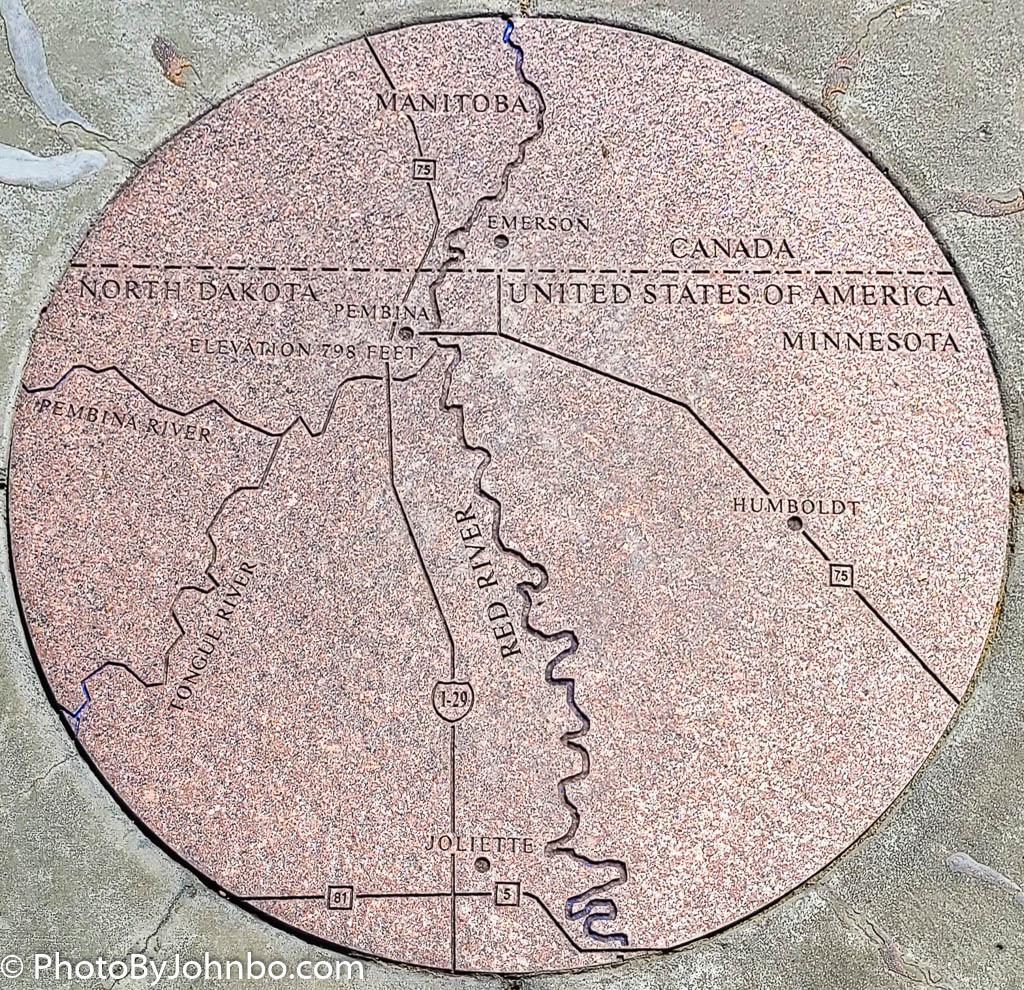
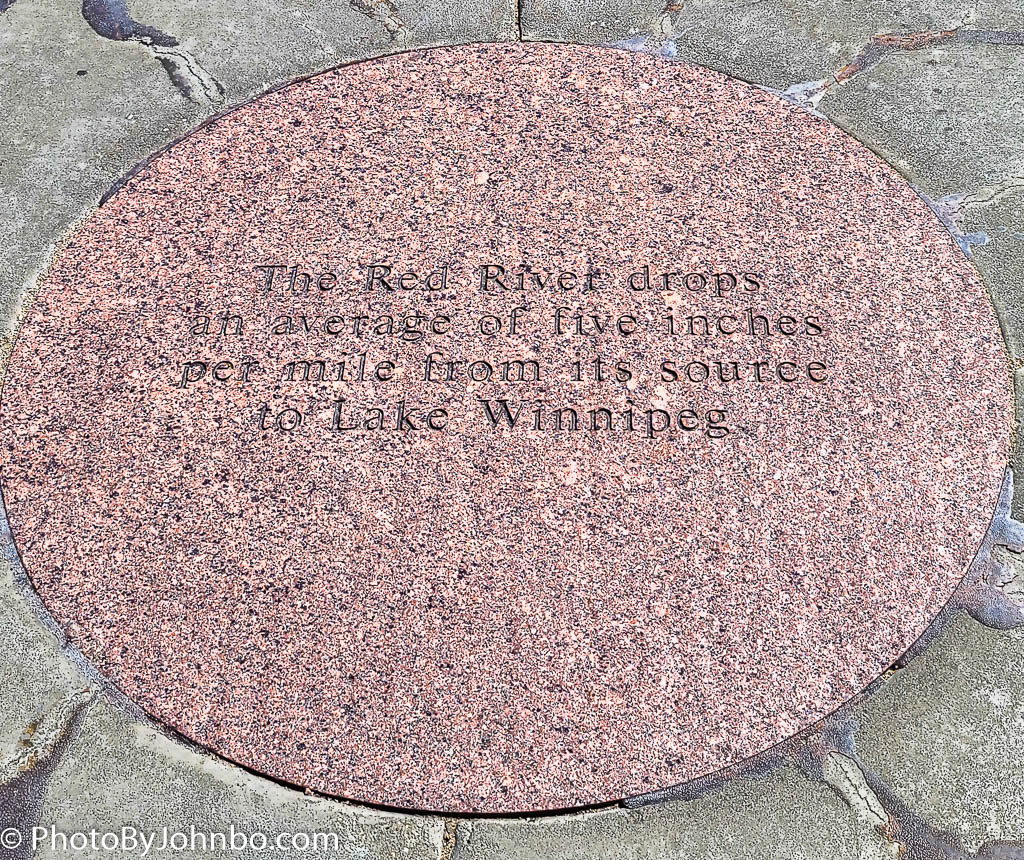
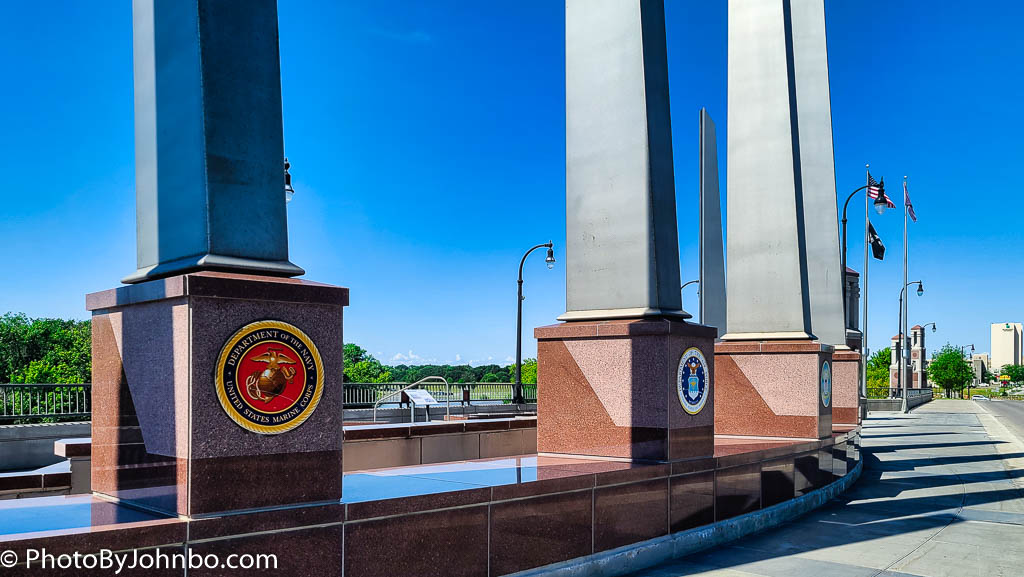
What a terrific idea and so well done!
It was indeed. I was remiss in not covering this bridge right after it was opened to the public.
You still got to it!
An amazing piece of architecture, beautifully executed.
It is, indeed!